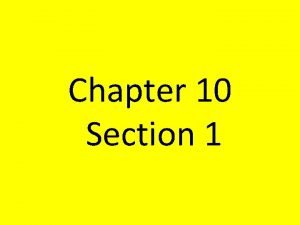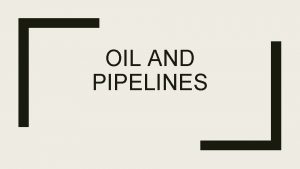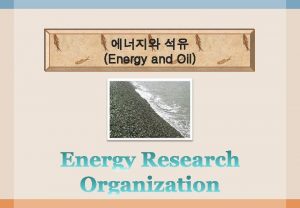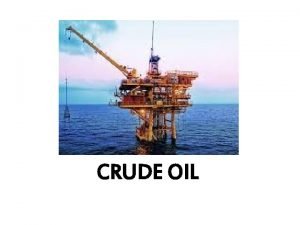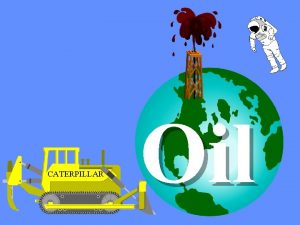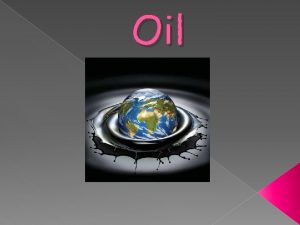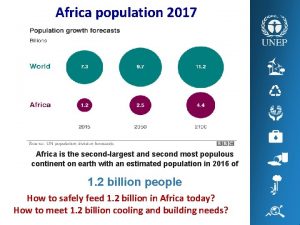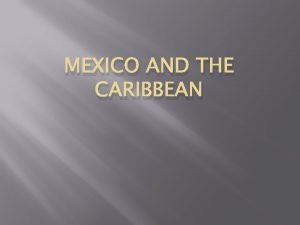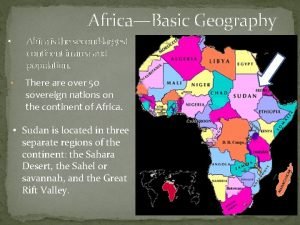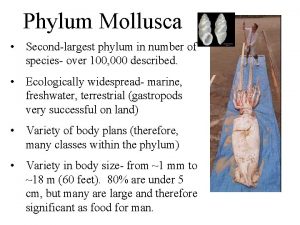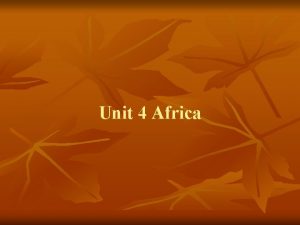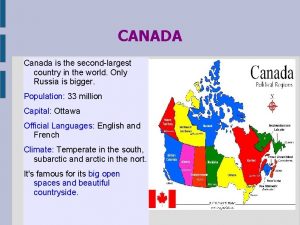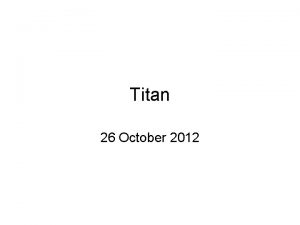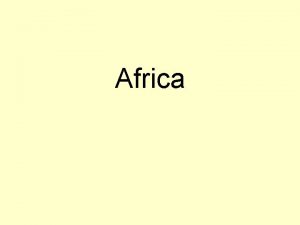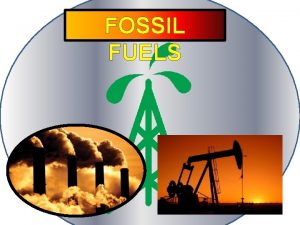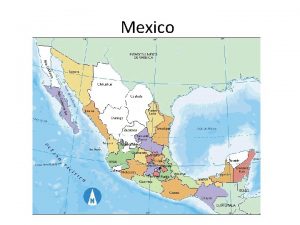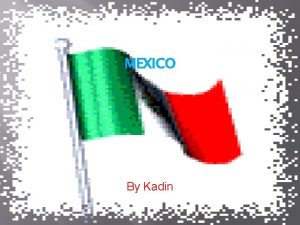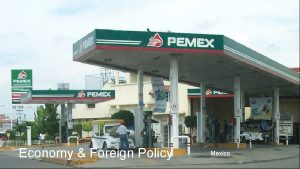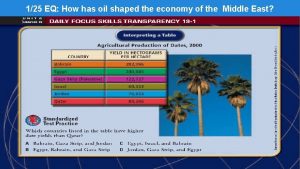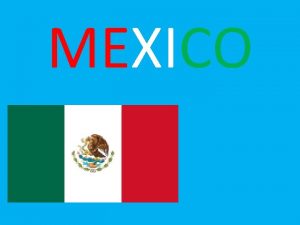Mexico Economy and oil Mexico has the secondlargest



























- Slides: 27

Mexico

Economy and oil Mexico has the second-largest economy in Latin America and is a major oil producer and exporter. Though production has fallen in the last few years, about one-third of government revenue still comes from the industry. Much of the crude is bought by the US.

Mexican poor and immigration Many poor Mexicans try to cross the border with the US in search of a job, and more than a million are arrested every year. The Mexican economy is heavily dependent on the money sent home by the millions of migrant workers in the US, and was hit hard by the downturn in the U. S. economy in 2008.

Economic recovery Mexico has recently been emerging from its deepest economic slump since the 1930 s, with foreign companies pouring billions of dollars of fresh investment into the country. Foreign direct investment climbed nearly 30 percent in the first six months of 2010 from a year earlier.

PRI RULES The Partido Nacional Revolucionario (PNR) dominated by revolutionary and reformist politicians from northern Mexico, was established in 1929 It continued to control Mexico throughout the 20 th century and was renamed the Partido Revolucionario Institucional (PRI; Institutional Revolutionary Party) in 1946.

Oil fuels the growth During the mid-1970 s, under the leadership of President José López Portillo, Mexico became a major petroleum producer.

Debt and decline By the end of Portillo's term, however, Mexico had accumulated a huge external debt because of the government's unrestrained borrowing on the strength of its petroleum revenues. The collapse of oil prices in 1986 also cut Mexico's export earnings.

Breaking down trade barriers In Jan. 1994, Mexico joined Canada and the United States in the North American Free Trade Agreement (NAFTA), with the plan to phase out all tariffs over a 15 -year period In Jan. 1996, it became a founding member of the World Trade Organization (WTO).

U. S. Bailout In 1995, the U. S. agreed to prevent the collapse of Mexico's private banks. In return, the U. S. won virtual veto power over much of Mexico's economic policy.

PRI losing grip In 1997, in what observers called the freest elections in Mexico's history, the PRI lost control of the lower legislative house and the mayoralty of Mexico City in a stunning upset.

Democracy prevailing To increase democracy, President Ernesto Zedillo said in 1999 that he would break precedent and not personally choose the next PRI presidential nominee. Several months later, Mexico held its first presidential primary, which was won by former interior secretary Francisco Labastida, Zedillo's closest ally among the candidates.

Fox and PAN In elections held on July 2, 2000, the PRI lost the presidency, ending 71 years of oneparty rule. The new president, Vicente Fox Quesada of the conservative National Action Party (PAN), vowed o o o tax reform overhaul of the legal system reduction in power of the central government.

Fox off to slow start By 2002, however, Fox had made little headway on his ambitious reform agenda. Disfavor with Fox was evident in 2003 parliamentary elections, when the PRI rebounded.

Election of 2005 In 2005, Andrés Manuel López Obrador, the enormously popular mayor of Mexico City, emerged as a presidential candidate for the leftist Party of the Democratic Revolution. But in Oct. 2005, Felipe Calderón unexpectedly became the candidate of Fox's National Action Party (PAN), defeating Fox's chosen successor. In the July election, Calderón won 35. 9% of the vote, a razor-thin margin over López Obrador, who received 35. 3%.

Protest López Obrador appealed the election, but on Aug. 28, Mexico's top electoral court rejected López Obrador's allegations of fraud. His supporters held massive protest rallies before and after the verdict.

Calderon pledges to fight the cartels Calderón was sworn in on Dec. 1. He vowed to make fighting the drug cartels a top priority, and he dispatched tens of thousands of soldiers and police to confront them.

Deaths are mounting In May 2008, Attorney General Eduardo Medina Mora announced that over 4, 000 people had been killed in drug-related violence since President Calderon took office— 1, 400 of the deaths occurred in 2008 alone.

Numbers continue to climb In Aug. 2008, hundreds of thousands of protesters across the country marched for the more than 2, 700 people who were killed and 300 kidnapped in drug-related violence since January 2008. In Dec. 2008, the number of killings registered between 1 January and 2 December was 5, 376—a rise of 117% from the previous year. In Nov. 2008 alone, there were 943 drug-related murders.

Merida Initiative In Dec. 2008, the U. S. released $197 million of a $400 million plan called the Merida Initiative to help Mexico fight the drug cartels, yet drug violence continued mostly unabated. By the end of 2009, an estimated 6, 500 people had been killed in drug-related violence. http: //www. youtube. com/watch? v=F 01 e. O 2 GTb. Qg&feature=related

Swine flu Late April and early May 2009 brought a flu outbreak. Swine flu, originated in Mexico and spread to at least 24 other countries. Originally, Swine Flu was thought to be quite dangerous, though as time passed, Mexican authorities said they may have overestimated the threat. As a precaution, the Mexican government shut down all nonessential business for five days starting on May 1, 2009. Other governments limited travel to and from Mexico.

America to blame Despite Calderón's pledge to bring down the drug cartels, drug-related violence escalated into 2010. After the fatal shooting in March 2010 of a pregnant U. S. consulate employee by an alleged drug trafficker, Calderón stepped up his pressure on the U. S. to take responsibility for its role in the crisis U. S. arms traffickers supply weapons to the cartels and drug users in the U. S. are consumers of Mexican drugs.

Revising strategy As the violence spilled over into the U. S. , officials did in fact acknowledge the country's role in the growing problem and the potential risks to U. S. national security. The U. S. and Mexico revised their counternarcotics strategy with a $330 million program intended to expand the Merida Initiative, which was begun under President Bush. The plan includes o strengthening poor communities to give citizens alternatives to crime o better screening at the border o shifting the focus of funding from military equipment to a civilian police force that will patrol Tijuana and Ciudad Juárez. http: //www. youtube. com/watch? v=g. B 002 DNa. UAA&feature=relmfu http: //www. youtube. com/watch? v=m. F 9 jz 1 M 7 l. X 4

US Aid and more violence In February 2011, the U. S. began flying unarmed drones over Mexico to collect and turn over information to Mexican law enforcement agencies. One drone reportedly provided information on suspects linked to the Feb. 15 killing of Jaime Zapata, a U. S. Immigration and Customs Enforcement agent. In July 2011, violence broke out in several cities. Over 20 people were killed in Monterrey when armed men began firing on a bar. During the same weekend, 11 people were found dead from gunshot wounds just outside Mexico City and 10 decapitated heads were found in Torreon. Although authorities did not identify suspects in the killings, officials said that all of the incidents occurred in the wake of cartel fights.

Mora’s death hurts efforts On November 11, 2011, Francisco Blake Mora, Mexico's secretary of the interior, died in a helicopter crash. Mora, the country's second most powerful government official, led the battle against drug traffickers. His death was a major blow to Calderón's presidency. Calderón appointed Mora to his cabinet in July 2010. Mora became the second interior minister killed during Calderón's term. Calderón's first interior minister was killed in a plane crash almost exactly three years ago.

Candidates PRI candidate, Enrique Peña Nieto, became the early frontrunner in the 2012 presidential election. In February 2012, Josefina Vázquez Mota was chosen as a presidential candidate for Mexico's National Action Party. Mota, an economist and former education secretary, becomes the first woman nominated by a major party to run for president. Andrés Manuel López Obrador was nominated again by the Democratic Revolutionary Party to run in the presidential election. .

Nieto 2012 With more than 97% of the votes counted on election day, the PRI had won with about 38% of the votes, just 6. 4 points above the leftist candidate López Obrador of the Party of the Democratic Revolution (PRD), who refuses to concede the results and has threatened to challenge the outcome. At a news conference, the leftist candidate claimed that the election was "plagued with irregularities The final election results confirmed that Peña Nieto obtained 38. 21% of the votes, followed by López Obrador with 31. 59%. http: //www. aljazeera. com/programmes/insidestoryamericas/2013/05/2013516483261 4217. html

http: //www. nytimes. com/2013/05/31/opinion/global/mexic os-deadly-power-vacuum. html? ref=mexico&_r=0 http: //www. nytimes. com/2013/02/21/world/americas/hum an-rights-watch-faults-mexico-overdisappearances. html? ref=mexico
 Identification of emulsion
Identification of emulsion Athens and sparta were both
Athens and sparta were both Suppose you live in a society that has a barter economy
Suppose you live in a society that has a barter economy Activity 1 let's review
Activity 1 let's review Hát kết hợp bộ gõ cơ thể
Hát kết hợp bộ gõ cơ thể Bổ thể
Bổ thể Tỉ lệ cơ thể trẻ em
Tỉ lệ cơ thể trẻ em Gấu đi như thế nào
Gấu đi như thế nào Tư thế worm breton
Tư thế worm breton Hát lên người ơi
Hát lên người ơi Các môn thể thao bắt đầu bằng tiếng bóng
Các môn thể thao bắt đầu bằng tiếng bóng Thế nào là hệ số cao nhất
Thế nào là hệ số cao nhất Các châu lục và đại dương trên thế giới
Các châu lục và đại dương trên thế giới Cong thức tính động năng
Cong thức tính động năng Trời xanh đây là của chúng ta thể thơ
Trời xanh đây là của chúng ta thể thơ Mật thư tọa độ 5x5
Mật thư tọa độ 5x5 Làm thế nào để 102-1=99
Làm thế nào để 102-1=99 độ dài liên kết
độ dài liên kết Các châu lục và đại dương trên thế giới
Các châu lục và đại dương trên thế giới Thể thơ truyền thống
Thể thơ truyền thống Quá trình desamine hóa có thể tạo ra
Quá trình desamine hóa có thể tạo ra Một số thể thơ truyền thống
Một số thể thơ truyền thống Cái miệng nó xinh thế chỉ nói điều hay thôi
Cái miệng nó xinh thế chỉ nói điều hay thôi Vẽ hình chiếu vuông góc của vật thể sau
Vẽ hình chiếu vuông góc của vật thể sau Biện pháp chống mỏi cơ
Biện pháp chống mỏi cơ đặc điểm cơ thể của người tối cổ
đặc điểm cơ thể của người tối cổ V. c c
V. c c


